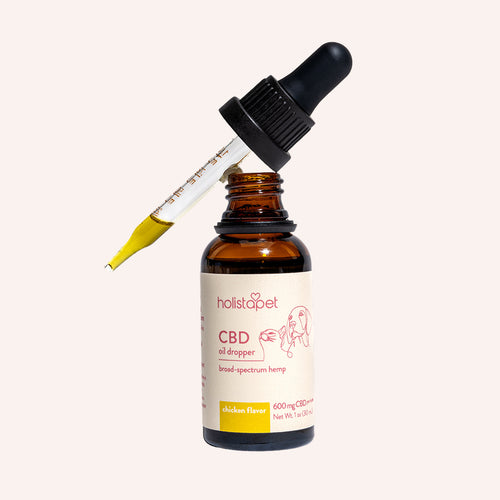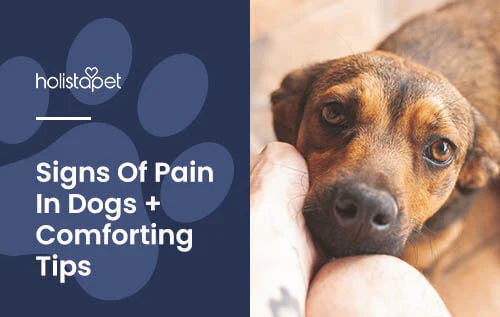If you notice your dog has breathing problems. Wheezing in dogs can sound alarming, and the causes are not always readily apparent. While many factors can cause wheezing, this article will help you find the source of your furry friend's labored breathing.
Why is My Dog Wheezing?
Why is my dog wheezing all of a sudden? The three most common reasons for wheezing in dogs are swelling or inflammation in the airways, something stuck in the windpipe, and medical issues. These are broad causes that cover a wide range of situations. These conditions can also overlap; for example, a medical condition could trigger swelling.
A swollen or inflamed respiratory tract forces the dog's breath through a small passageway, creating a whistling or dog making wheezing sound known as a stridor. This whistling is typically heard most clearly when the dog breathes out rather than in. Why my dog keeps wheezing? Wheezing on an inhale is usually a sign of more severe issues.
Numerous health problems can lead to respiratory distress in your dog. These include allergies, infections, diseases, a collapsing trachea, heart disease, and a foreign body. Exaggerated swallowing motions are a likely sign that your dog has something stuck in its throat.
What Does a Wheezing Dog Sound Like?
Why is my dog is wheezing and gasping for breath? Canine wheezing sounds like a high-pitched whistle that accompanies a dog's breathing. A wheezing dog usually also has trouble breathing, though this is not always the case. Wheezing is often accompanied by nasal discharge and increased mucus production. Wheezing may be confused with coughing, sneezing, or panting, though they are not the same things. Not all wheezing dogs cough, though if they do, it can help you determine what the issue is.
If you're trying to identify your dog's noises, remember that wheezing in canines sounds like it does in humans. If you need to take your dog to the vet, take note of which combination of body functions the animal is experiencing. Are they coughing, wheezing, and sneezing? Just wheezing and coughing? These distinctions may seem trivial, but they will significantly help your veterinarian determine the problem.

What Causes a Dog to Wheeze?
Dogs get up to all sorts of mischief, so it can be tough to find the cause of labored breathing. Triggers like allergens and foreign bodies are almost impossible to detect until they affect our pet. With the right preparation, we can minimize the risk of irritants becoming serious issues.
Allergies
Allergies are common in canines, and if your dog is wheezing, it could be a reaction to an allergen. An allergic reaction is a body mistaking a foreign substance as a more severe irritant. It is essentially an "overreaction" of your dog's body to something in its environment, and wheezing is a symptom.
Food allergies affect many dogs, but wheezing is usually due to airborne allergens. These include pollen, mold, and dust. When the allergen enters the dog's airways, they swell to prevent the irritant from affecting the rest of the body.
Kennel Cough
Canine infectious tracheobronchitis, better known as kennel cough, is a highly infectious upper respiratory disease. It is called kennel cough because it spreads quickly throughout dogs kept near one another, like in a kennel. The symptoms are wheezing and a hacking cough. Inhaled bacteria cause kennel cough. Though it can sound serious, kennel cough is not a severe condition. While most dogs recover without treatment, antibiotics can target and kill bacteria in the dog's lungs.
Foreign Body
Foreign bodies are objects that get stuck in your pet's windpipe. These can be pieces of bone, toys, sticks, or anything that is the size of your dog's windpipe. Besides wheezing, symptoms of foreign bodies include drooling, pawing at the mouth, and gagging. When it comes to foreign bodies, dogs are a lot like children. They'll chew on anything when they're young and should not be given objects that can be swallowed. Food should be appropriate for the dog's size, and bones should be taken away once broken into small pieces.
Swallowing Down the Wrong Pipe
Like humans, dogs have an esophagus and a trachea. They are both found in the throat, but they perform different functions. The esophagus leads to the stomach, and the trachea leads to the lungs. If your pooch scarfs its kibble down too fast, a piece of chow may get sent down the wrong pipe.
Some canines may have cricopharyngeal achalasia. This is a rare condition that prevents the esophagus (food pipe) from closing properly. However, food getting sent down the wrong path is usually due to rushed eating. Symptoms include wheezing and pawing at the throat, and the dog should be taken to a veterinarian immediately.
Collapsing Trachea
The trachea (windpipe) is supported by cartilage, and tracheal collapse is the deterioration of that cartilage. Without the support, the windpipe begins to "deflate" like a garden hose without water running through it. It may cause wheezing, a honking cough, vomiting, or gagging. Small breeds like the Lhasa Apso, Chihuahua, and Pug are at risk for tracheal collapse. Ask your veterinarian whether your dog is susceptible to the condition. Luckily, surgery may be able to correct the issue.
How to Ease Dog Wheezing
A dog's wheezing can distress any pet owner, but there are steps you can take to get your dog the care it needs and there are home remedies for why is my dog wheezing and gagging. While conditions like kennel cough may go away independently, an issue like tracheal collapse must be addressed as quickly as possible. If possible, try to contact your dog's breeder or previous owner and ask them about any known allergens.
This can significantly minimize the chance of an allergic reaction. If you start to hear that whistling sound or dog wheezing sound, the following are the steps you should take to ease your dog's wheezing.

Remain Calm
If your dog is wheezing, panicking won't help. Our pets are incredibly empathetic and look to us for guidance in many situations. Dogs that see their owner panicking may feel stressed, which could make their breathing even more difficult. Avoid jumping to conclusions until you've talked to a veterinarian, as it may be a common issue with a simple solution.
Even if you know the cause of the problem, give your dog its space. Speak calmly and reassuringly to show your pet that there's nothing to worry about. This will also help you diagnose the issue more quickly.
Monitor Symptoms
Symptoms can flare up, die down, and be accompanied by other signs of discomfort. If you notice wheezing, watch for other respiratory system distress symptoms, including panting, gagging, coughing, vomiting, and sneezing. If you can't get veterinary assistance immediately, monitor these symptoms until you can. The more information you can give your veterinarian, the better. Recording your dog's symptoms can give the vet a clear idea of how to help it.
Can I Give CBD to My Dog?
Absolutely! Cannabidiol (CBD) is a hemp-derived compound that can help us and our pets in many ways. CBD may soothe irritation and alleviate the mental anguish that can afflict a wheezing dog. CBD dog treats may strengthen your pet's body, help with symptoms, and calm the dog after it's received veterinary assistance.
Another way CBD aids your pet is by boosting its endocannabinoid system (ECS). The ECS is present in nearly all mammals and regulates essential body functions like heart rate, digestion, and breathing. Cannabinoid receptors are present in your pooch's brain, immune system, organs, and throughout its body.
These receptors interact with CBD molecules as they enter your pet's system. This interaction assists the overall functionality of the ECS, which is crucial for a healthy airway.
View All CBD Products For Dogs Here.
Move Your Dog to a Well-Ventilated Area
If your dog is wheezing due to airborne irritants like allergens, try moving them to a new location. A well-ventilated room may allow your pet's body to readjust and settle without introducing new irritants. Fresh air does dogs just as much good as it does us!
When Should I Take My Dog to the Vet for Wheezing?
The occasional whistle on a dog's breath may not cause a trip to the vet, but it does call for increased attention to your pet. Whether it is an issue largely depends on the animal's breed and its susceptibility to disease, asthma, bronchitis, or allergic reactions. Once you know these factors, it'll be easier to determine when wheezing is a problem.
If your dog usually has clean, blockage-free airways, a small amount of wheezing is cause for concern because nothing should be blocking its windpipe. On the other hand, dogs with bracyaphyllic (squished) faces, like the Bulldogs, might frequently have trouble with their airways.
How to Make Breathing Easier for Your Dog at Home
Clean air is much easier to breathe than a smoky or chemical-filled atmosphere. The best way to look after your furry friend's airway is to keep its environment clean and pollutants-free. These are some steps you can take to enhance the air quality in your home:
- Do not use cleaning supplies, chemicals, or aerosols that contain airborne irritants for pets. Search for pet-safe products and avoid ingredients such as alcohol, bleach, hydrogen peroxide, and chemicals that contain "phenol" in their names.
- Dog owners should avoid feather dusters and excessive vacuuming. These devices kick dust mites into the air, which can eventually accumulate, resulting in breathing troubles for your pet. We recommend using a dampened cloth or a microfiber towel when cleaning.
- Change air filters regularly. Dirty filters won't catch nearly as many pollutants.
- Don't allow any cigarette smoke around your puppy.

Final Thoughts
Your dog may be gasping for several reasons, but the important thing is how we prevent and prepare for breathing troubles. Some breeds (like those with bracyaphyllic faces) are more susceptible to wheezing than others, but a dog of any breed can experience a troubled airway. Take care of your furry friend's air quality to keep your trips to the vet few and far between!
Learn more care tips for your dog here.


 CBD Oil for Dogs - Fast Acting
CBD Oil for Dogs - Fast Acting
 Chicken Flavored CBD Oil For Dogs - Easy Dose
Chicken Flavored CBD Oil For Dogs - Easy Dose
 Salmon Flavored CBD Oil For Dogs - Highly Rated
Salmon Flavored CBD Oil For Dogs - Highly Rated
 CBG Oil for Dogs and Cats - Loved by Thousands
CBG Oil for Dogs and Cats - Loved by Thousands





Leave a comment
All comments are moderated before being published.
This site is protected by hCaptcha and the hCaptcha Privacy Policy and Terms of Service apply.